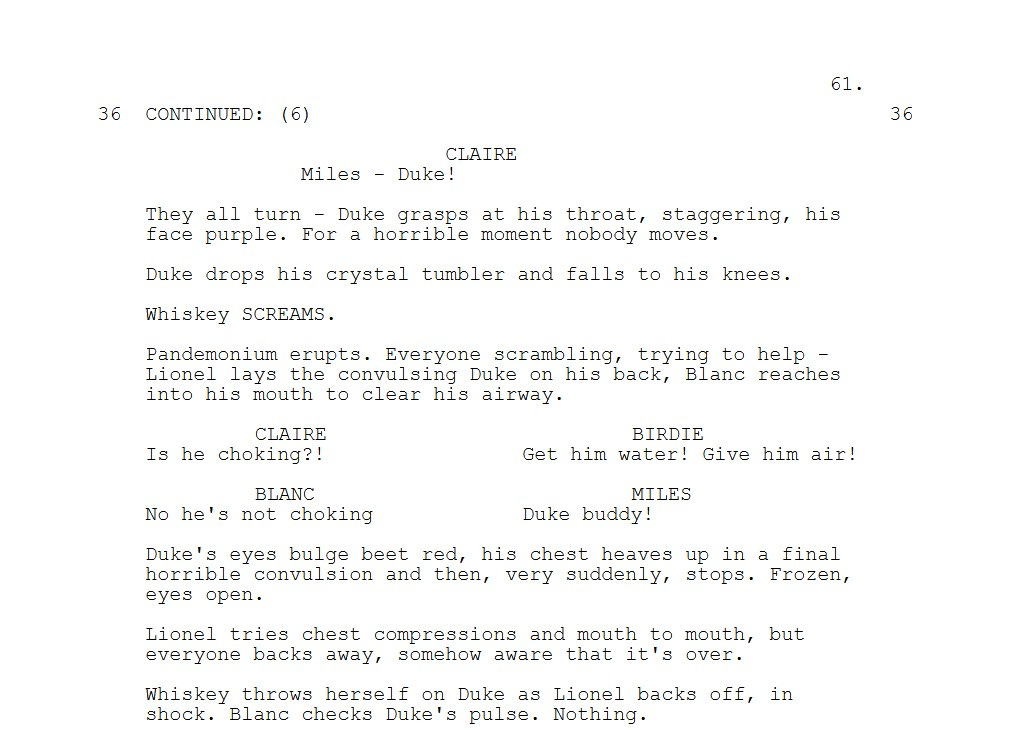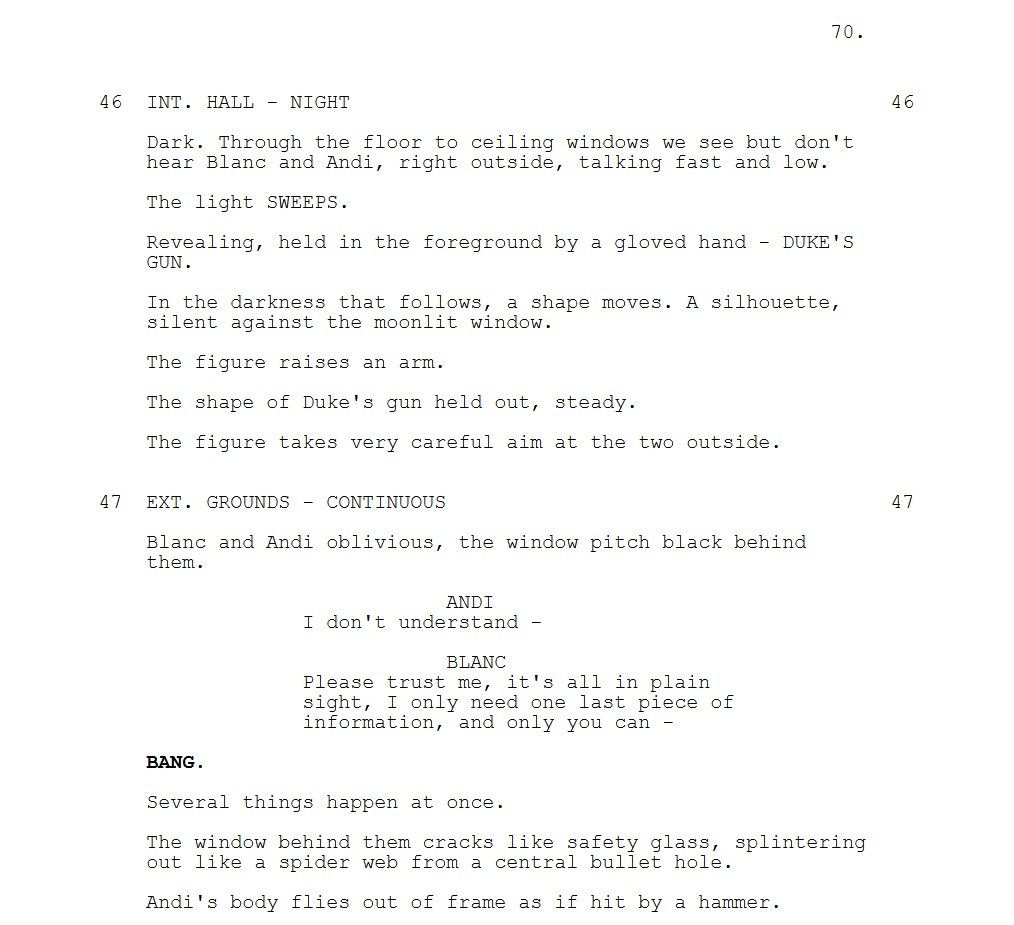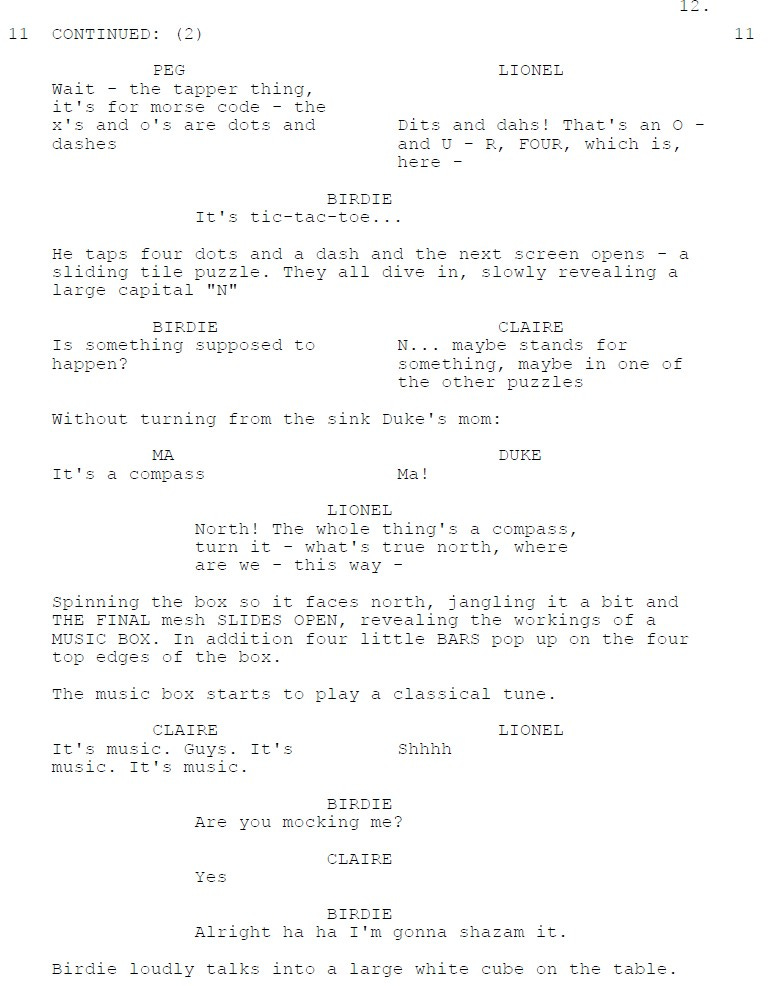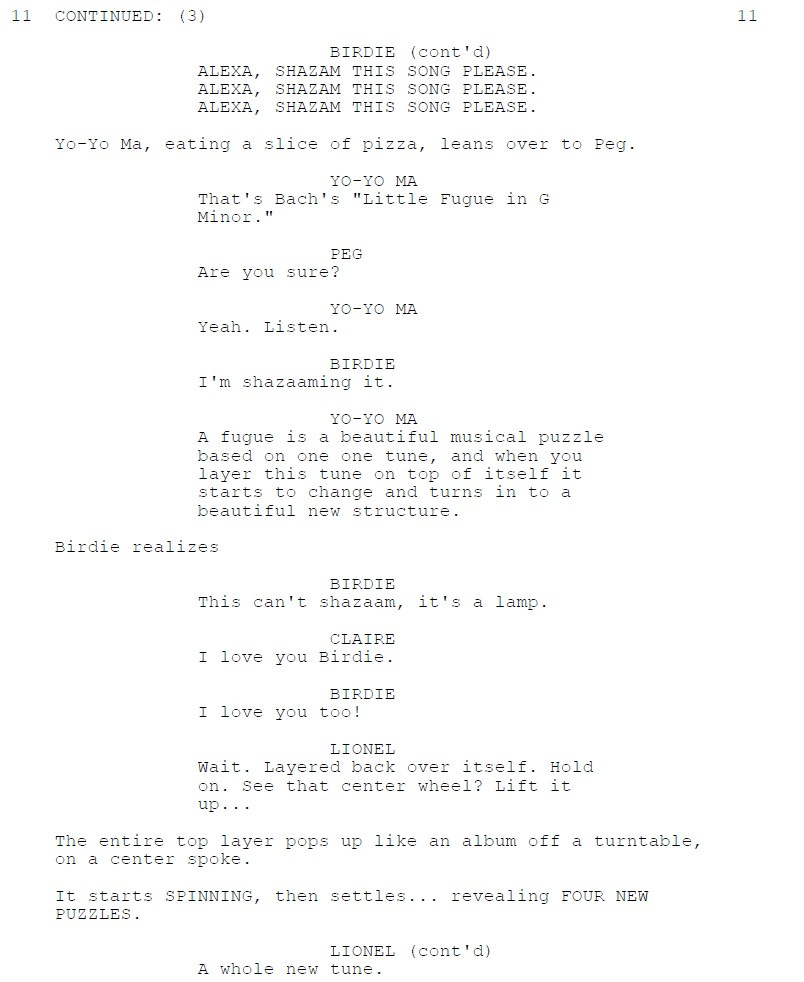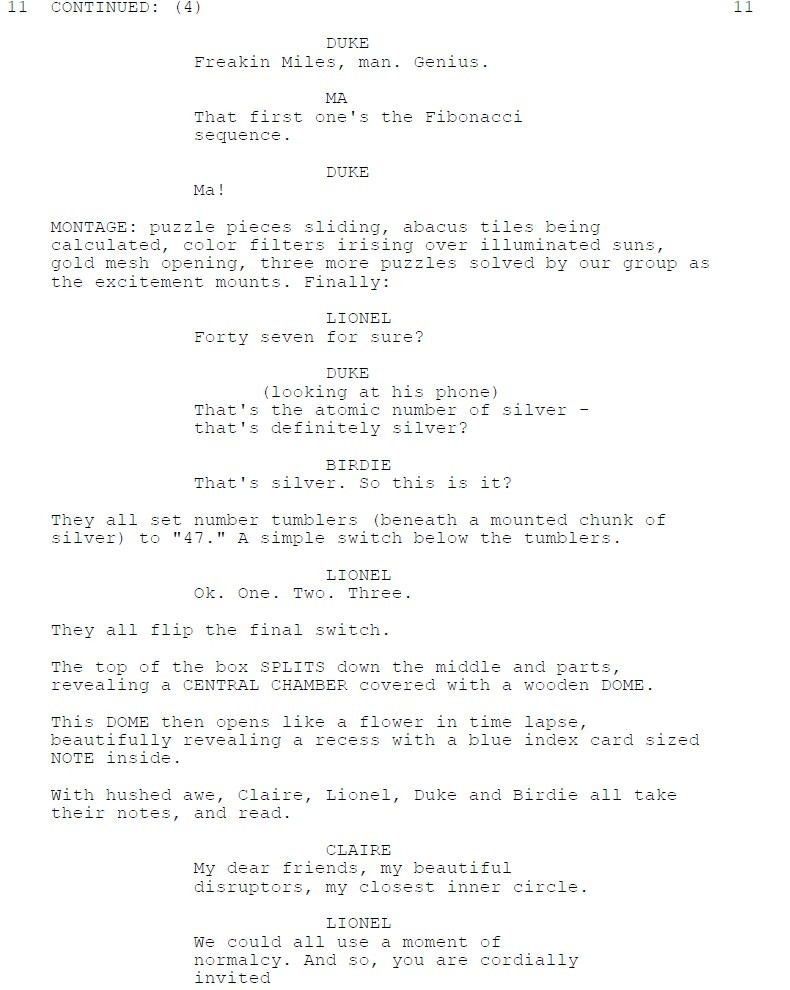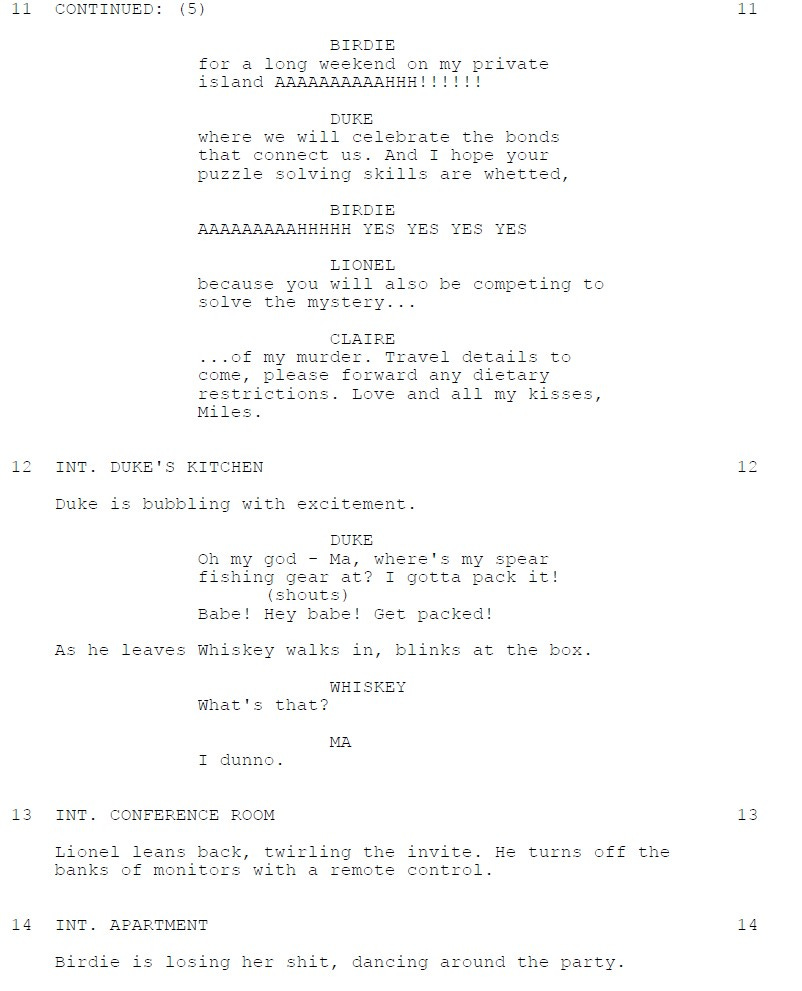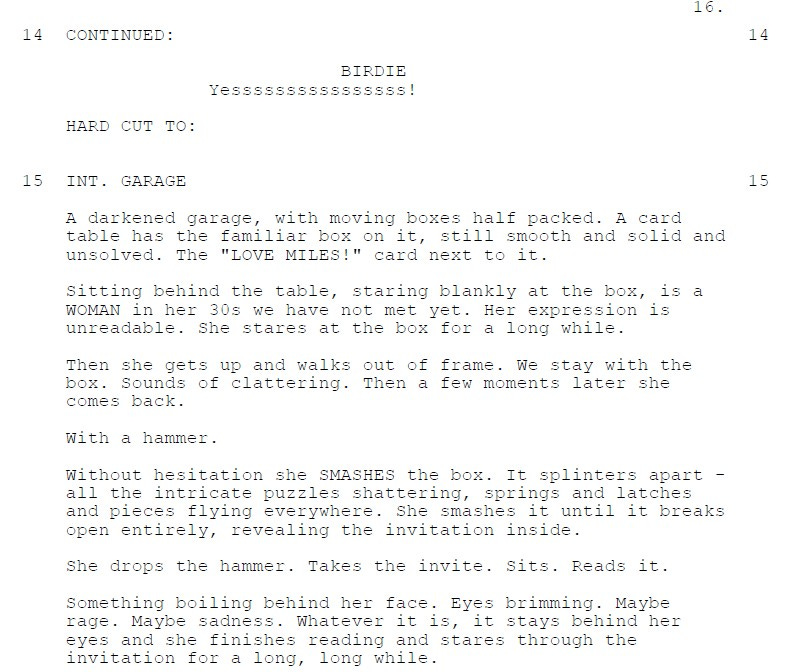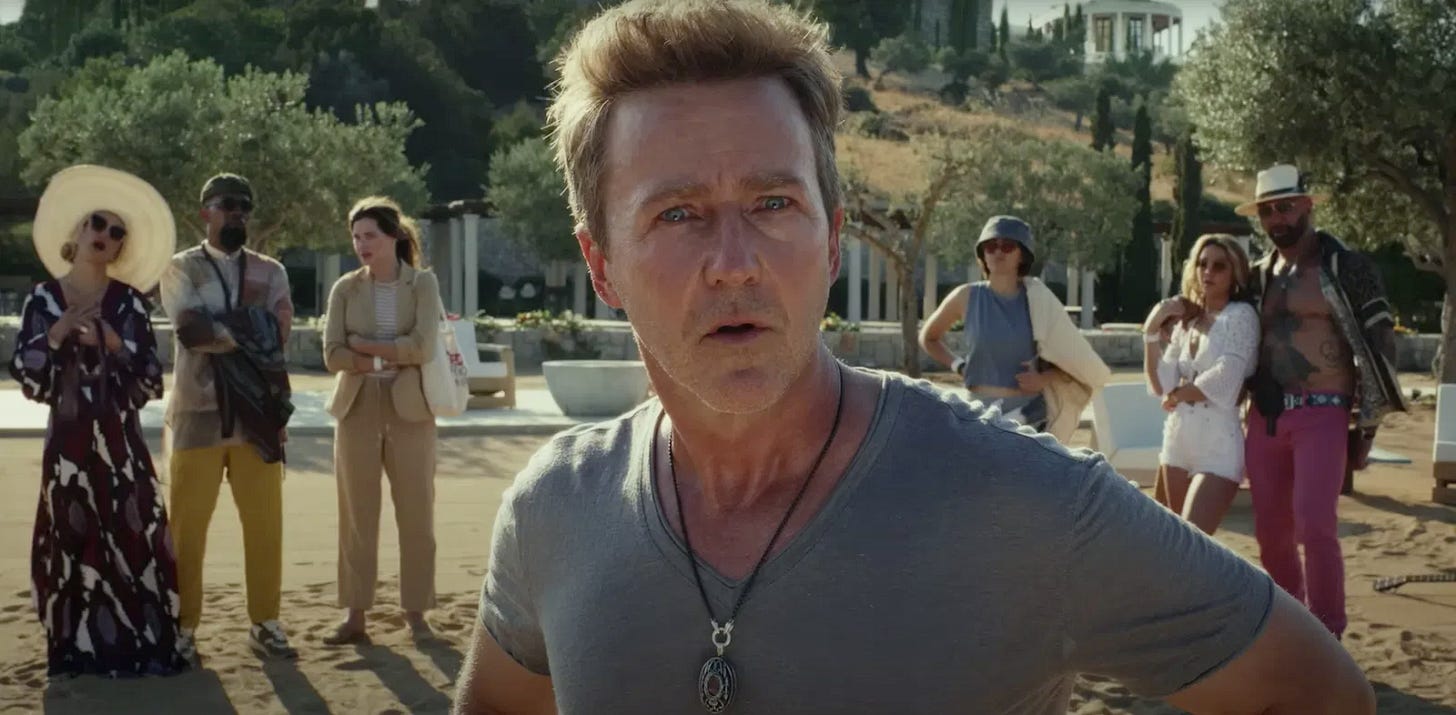Glass Onion: A Knives Out Mystery (2022) Script Review
In this warm, clever, and fun-filled holiday murder mystery in the now-Benoit Blanc series, Rian Johnson proves he can catch lightning in a bottle twice.
Welcome to Script by Line. This week, we’ll be taking a look at Glass Onion: A Knives Out Mystery, breaking down the second entry in what is shaping up to be the Benoit Blanc series.
Let’s dive in.
Logline: World-famous detective Benoit Blanc heads to Greece to peel back the layers of a mystery surrounding a tech billionaire and his eclectic school of friends.
Written by: Rian Johnson
Pages: 134
Scenes: 150
Glass Onion is not a sequel. It has no connection to Knives Out, apart from its lead character. It is a new story, a new installment in the Benoit Blanc franchise, one that has the potential to do for Rian Johnson what Hercule Poirot did for Agatha Christie: to create a series of different murder mysteries. And Glass Onion proves that Johnson can recapture the magic of Knives Out.
Trading the mists of New England for sunbathed Greece, a mansion on an estate for, well, a mansion on an island, Glass Onion finds dapper detective Benoit Blanc whisked away for a murder mystery weekend to the island of Miles Bron, tech billionaire and co-founder of Alpha, along with a circle of his friends colloquially referred to as The Disruptors. (The fact that this takes place at the height of the COVID-19 pandemic is not accidental; Johnson is actively using the moment to showcase the callous disregard for norms that wealth creates.)
The trouble is, Miles never sent Blanc an invitation; he’s never even met him until now. Blanc thinks somebody might be trying to kill Miles. But who’d want to kill a tech billionaire (he asks, sarcastically)? Turns out, quite a lot! The suspects include everyone on the island, except for Blanc.
Claire Debella – a Connecticut governor running for Senate. Miles is backing her campaign, under the condition that she sign off on opening a plant to create an unstable fuel called Klear;
Lionel Toussant – the head scientist at Alpha, also pressured to sign off on Klear;
Birdie Jay – a former model turned fashion designer, who needs Miles’ financial assistance after being caught for using sweatshops to design her clothes;
Peg – Birdie’s long-suffering assistant; if Birdie goes down in flames, Peg will never get another job because she’s worked her whole life for Birdie;
Duke Cody – a video game streamer and men’s rights activist on Twitch and YouTube who desperately needs Miles to put him on a bigger platform to boost his profile;
Whiskey – Duke’s girlfriend and Twitch channel assistant, who is sleeping with Miles on Duke’s behalf to get Miles to help Duke;
Cassandra ‘Andi’ Brand – co-founder of Alpha and Miles’ ex-business partner, booted from her own company by Miles because she refused to sign off on Klear.
Murder mysteries follow a format. By and large, we are introduced to the suspects in the beginning, then the lead investigator meets and interacts with the potential suspects, gathering clues and disregarding red herrings until reaching the answer; often by gathering the suspects in a room and dramatically unmasking the culprit. Often, there is a sidekick helping with the investigation. And always, there will be a second body that turns up halfway. But at first, Johnson seems to be violating the rules. There’s no sidekick, and for the first half of the story, there’s no body or crime committed on the island. In fact, there doesn’t seem to be a murder at all, just a growing threat that one might happen— until Duke drops dead on page 61.
Immediately followed by a second murder moments later, as somebody shoots Andi on page 70.
And then, on page 73, Rian Johnson shows his cards. He flashes back to the moment when Blanc first got embroiled in the mystery: when a girl named Helen Brand arrives on his doorstep with a package and a request: to help her bring justice for her twin sister who died a week before the story begins.
Her sister, Cassandra— or Andi. Helen doesn’t think it was suicide; she believes Andi was murdered.
Suddenly, the new pieces of information recontextualizes what we’ve been reading all this time. There was a murder after all in the first half of the story! Off Blanc goes, pretending to have been mistakenly invited; off Helen goes, pretending to be Andi, to help Blanc gauge the reactions of the others. Helen, under the guise of Andi, is Blanc’s sidekick; she’s also the real protagonist. It’s her story and her pursuit to right the wrongs inflicted on Andi that gets us invested. For about 40 pages— from page 73 to 113— Johnson rehashes scenes from earlier but this time, we get new pieces of information and new sides to the story. The objective has changed: Blanc isn’t there to find out who wants to kill Miles, he’s there to find out who killed Andi; and later, Duke. On page 113, we return to where the narrative paused for the flashback. Blanc unveils the culprit, with a flourish marred only just by his disdain for how he arrived at his answer.
Effectively halting and rewinding half the story is a massive gamble. But it works, a clever sleight-of-hand that reveals the mystery structure was hiding in plain sight all this time. Revealing that there was a twin only at the halfway mark was another risk; Ronald Knox’s 1929 10 Commandments of Detective Fiction famously stipulated no secret twins or doppelgängers were to be dropped in the final pages without foreshadowing. Glass Onion doesn’t break the rule because the twin was there all along. Johnson didn’t cheat; he simply waited for the right moment to reveal his trick.
One of the best scenes in the script is the opening. To rapidly establish the cast of suspects, Johnson uses the puzzle box that Miles sends to The Disruptors to show their connections and give us a sense of each character while they spoke to each other over the phone. It’s a fun sequence, written with amazing efficiency. Johnson said, “The box gave it an element of fun, a spine, and a way for all the characters to be on speaker phone solving the mystery of how to open it together, so you see the dynamics between them in real time.”
Now compare the page with the finished result; and you’ll discover that it plays out like its own beautiful puzzle box. It also hints, using the fugue comparison, that the script will reveal another layer by playing atop the previous one.
A crucial key to detective fiction is to have a protagonist with whom the audience comes to care about. Although Benoit Blanc is the main character, he doesn’t change throughout the story. He is merely a guide; we have to rely on the other characters going through a transformation and emotional journey. Sometimes, it is the sidekick who experiences this— Hastings in the Poirot novels, Watson in the Sherlock Holmes novels. In this instance, the sidekick is the protagonist, just as Marta Cabrera was in Knives Out, so too is Helen Brand in Glass Onion. There’s also a secondary emotional transformation in seeing the other characters free themselves from the clutches of Miles Bron. As Johnson pointed out, “There needs to be a beating heart at the center of the film, and it can’t be Blanc searching for clues and solving the crime.”
How did Rian Johnson write Glass Onion?
The detective story, especially those by Arthur Conan Doyle and Agatha Christie, tend to be commentaries about the times. The Poirot novels, in particular, run the gamut of almost 50 years, which is why they cover everything from post-World War I society in 1916 (The Mysterious Affair at Styles, The Murder of Roger Ackroyd) to World War 2 (Taken at the Flood) and all the way to the late 60s-early 70s (Third Girl). Rian Johnson’s decision to poke fun at the tech world was not necessarily driven by a desire to take the piss out of tech billionaires. Fascinated by American society’s relationship with tech billionaires and the tendency to “to hate them but… also want to kind of believe they’re Willy Wonka. The very American, natural instinct to mistake wealth for wisdom and competency.” He said it was closer to the “reaction to the past six years and the nightmarish Fellini-esque circus of big, dumb people being protected by obvious lies, and smart people approaching it as if these people were playing an elaborate game of 3D chess and how do we figure them out, when in reality it’s just a big dumb thing in order to keep power.”
Adds Johnson, “It’s not like it’s an incredibly subtle movie in terms of what it’s talking about, so the last thing I want to do is just spout out what the movie’s about. The whole movie, for me, is a bit of a primal scream against the carnival-like idiocy of the past six years.”
Johnson spent years working on Knives Out. For Glass Onion, he had a fraction of that time. He started writing it in 2020, in the middle of lockdown, and his marching orders were “this is a whodunit set in America right now.” He also wanted to do a destination mystery this time, in the vein of Christie’s Evil Under the Sun and Death on the Nile, as well as the 1970s film, The Last of Sheila.
“I wanted to create a microcosm of society and everyone to be as distinct as possible,” he said. To achieve this, Johnson started creating a mix of characters by deciding what types of “friends” a billionaire like Miles would have. Once the archetypes were sorted, he built out a spectrum of personalities, but without shaping them into real characters with defining characteristics, except for the villain, the killer, the protagonist, and the detective. For now, Johnson focused on the overall story structure. Only then does he shape the characters to meet the story’s needs, identifying with each character to determine the best way into the story, noting that “even clownish characters like Birdie, a former fashion icon, needs moments of empathy where you see she’s a survivor driven by her underlying fear of losing attention and relevance in a fast-paced world.”
Johnson continues, “The group of friends begin in an idealistic place which rots and falls apart over the years is the heart of the character arcs… We meet everyone in the middle, where they are… a few moments before being invited to the island.” The friendship is at its lowest; but they are still drawn together by a united sense of disrupting the world with Miles at the helm. “It’s only in the middle of the movie where we do a big flashback of the group in happier times and reveal their origins and what initially drew them together,” he adds.
Having completed his first draft, Johnson takes a step back. He wants to feel out the story, trying to decide which character needs “an additional moment of suspicion.” With detective fiction, everyone has to be a potential suspect until the murderer is identified.
The process is tricky. To quote Johnson: “It’s not like I come up with a group of characters and then decide which one is the killer. I start just with a basic spine of what the story’s going to be, and when I begin there are no characters in my head beyond the protagonist, the detective and the killer. I don’t even necessarily know who those characters are, just in the abstract: What if it’s constructed in such a way?”
Another key ingredient that he added is a scene where Blanc has a “concerned, almost fatherly heart-to-heart talk with [the culprit]”. Referencing moments from Poirot adaptations as precedence such as Mia Farrow in Death on the Nile and Jane Birkin in Evil Under the Sun, Johnson considers this crucial as it reveals the detective’s moral center and where he stands.
Johnson’s ability to deconstruct a story to its minutiae has always been his strength. From drawing on Dashiell Hammett for his directorial feature, Brick, to playing around with time travel in Looper, and, yes, even upending convention on Star Wars: The Last Jedi, this attention to story structure pays off satisfyingly especially in murder mystery tales like these. The script is a thing of beauty; a fun thrilling read that could give Christie’s detective novels (the primary influence) a run for their money. His love for the genre, combined with his own filmmaking craft, has landed him a moneymaking machine and even revived the detective fiction genre for the 21st century. For his efforts, Johnson was nominated for the Best Adapted Screenplay Academy Award (all sequels/prequels/spin-off/reboots/remakes/installments to original stories fall under this category); perhaps his upcoming1 third installment, Wake Up Dead Man, will finally net him the golden statuette.
What makes a mystery work? For Johnson, it’s beyond the unveiling of the suspect. He says, “The purpose of the entire machine from the first scene until the very end of it is to provide the emotional catharsis of a great ending, which is that old chestnut of “unexpected, but inevitable.” If the very last thing you have is the completion of a ball that was thrown at the very beginning, that’s going to feel incredibly satisfying in a deep, almost subconscious way to the audience. The great endings that I love in cinema, that’s what defines them for me, and that’s what we always aim for, I think.”
Notes:
https://www.creativescreenwriting.com/cswcms/rian-johnson-talks-glass-onion/
At this time of writing


